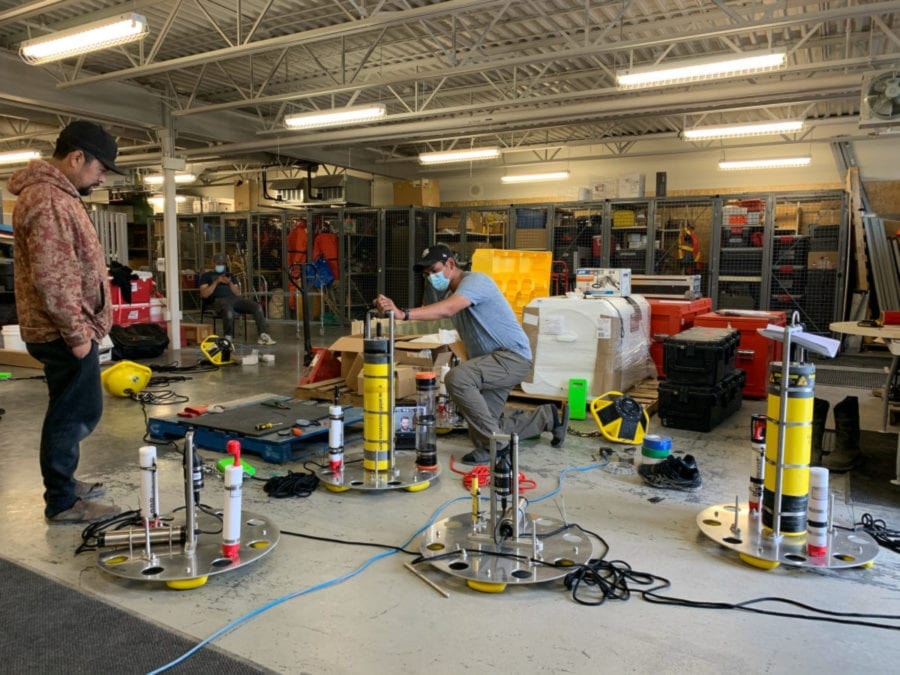When Covid-19 restrictions put major limits on travel throughout Canada, vital Arctic research was in danger of being frozen with it.
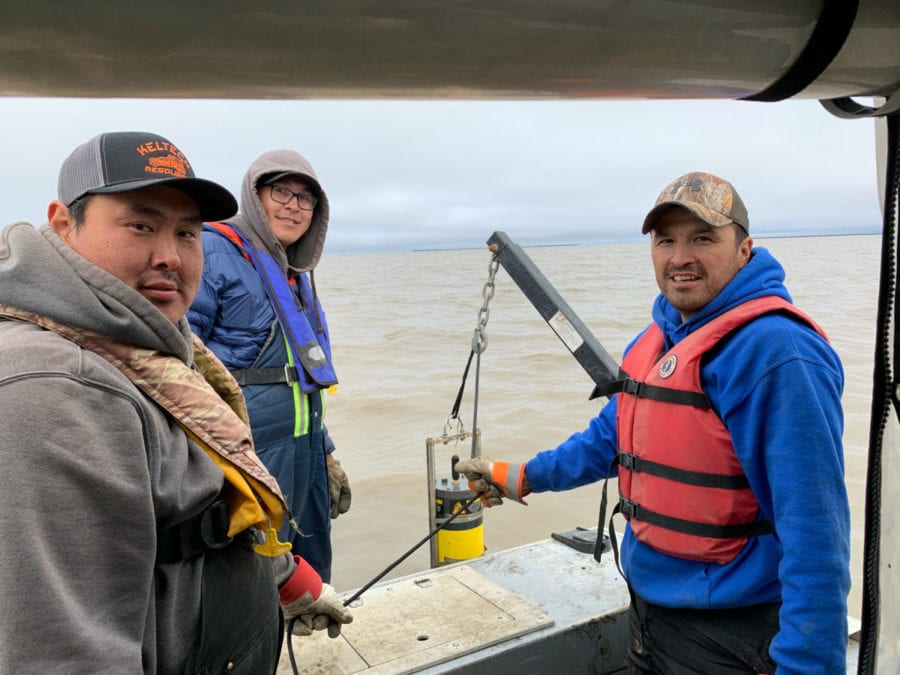
Photo courtesy Joint Secretariat
However, thanks to a creative idea by Natural Resources Canada (NRCan) physical scientist Dustin Whalen and Department of Fisheries and Oceans (DFO) biologist Lisa Loseto, research has been able to continue and Beaufort Delta residents got some hands-on training in research methods as well.
"In the past I had went out with the actual scientists and helped them get the samples, we learned from each other. They were telling me what they needed to gather for their research and shared their scientific knowledge while I shared my traditional knowledge," said joint secretariat junior resource coordinator Chukita Gruben. "This year, we independently were able to go on the field. We were able to do the job, record notes and take pictures and videos. We loved the trip, to be able to go out on the land, see some wildlife and go boating and report back the work that was done back to the Communities, DFO and NRCan.
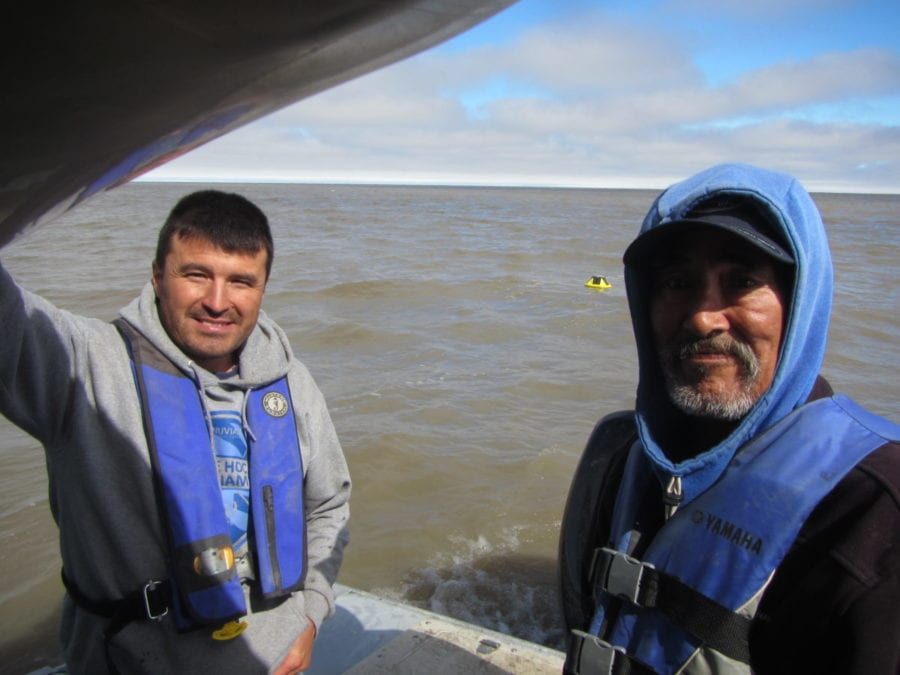
Photo courtesy Joint Secretariat
"Getting to help and to feel more a part of a scientific project like this is meaningful for us. We're still learning from each other, so it's really good to be more involved in research that takes place in our region."
Essentially, equipment was shipped up to the Aurora Research Institute in Inuvik and assembled, then taken to key research locations in the Delta, specifically Kugmalit and Shallow Bay, two at Shingle Point, another West of Hendrickson Island, and using online communication services Whalen and Loseto coached hunters, fishers and other volunteers how to set up, operate and take readings of the instruments. Volunteers were also able to assess the state of equipment at the East Whitefish weather station.
And they took care of the rest, installing the moorings for the scientific instruments between June 24 and 26 and retrieving them Sept. 8 and 13.
"We left Inuvik with the Imaryuk Monitor, Max Kotokak and Jimmy Kalinek, who was contracted," said Gruben. "The two men deployed the mooring while I took notes. The Aurora Research Institute set up the instruments.
"There were a lot of communications and logistics, going over each of our roles."
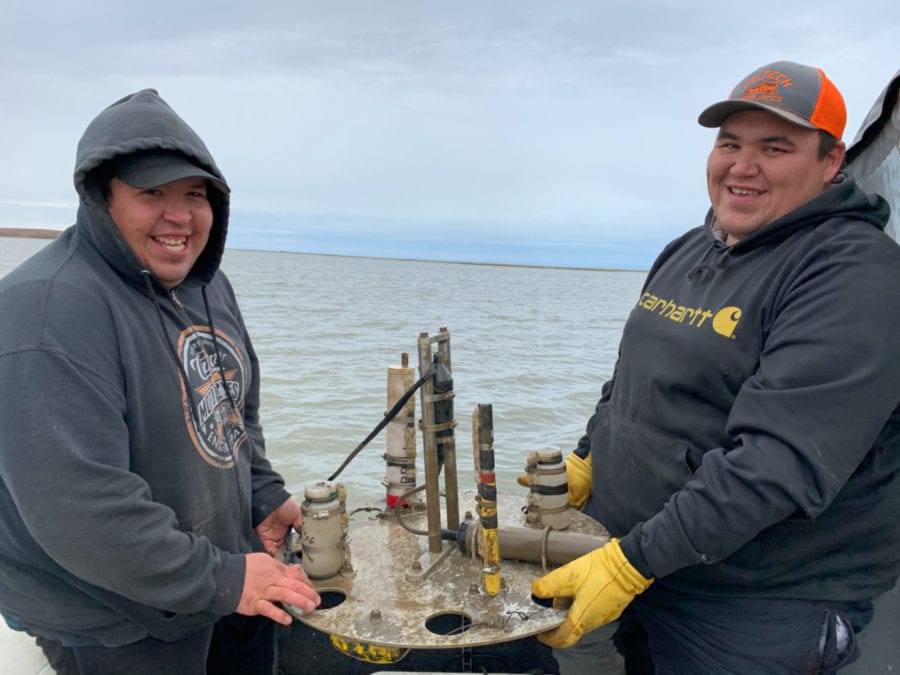
Photo courtesy Joint Secretariat
Each mooring collected data on several fronts — beluga whale noises and calls as well as information on the temperature of the water, how salty the water is, how high the water rose, the strength of the waves and the amount of sediment trapped in the water.
Whalen said he and Loseto were still crunching a lot of the numbers, but one item that stood out for him already was the difference between water temperatures in the sample areas, with differences ranging up to 10 degrees in some cases.
"There was quite a difference in sea surface temperature in the areas over in Shallow Bay versus the area in Kugmalit Bay," said Whalen. "This absolutely would have impacts to what types of species are comfortable in the different habitats.
"But before this study and before we were able to get local help on this we wouldn't have had any idea there was such a major difference."
Things worked out so well, Whalen said researchers were planning to continue running the program this way next year. Even after Covid-19 is no longer a threat, he said the benefits of this way of handling research were overwhelming.
He noted not only does handling research this way save money on travel costs, but it also gives people exposure to career paths they might not have otherwise considered.
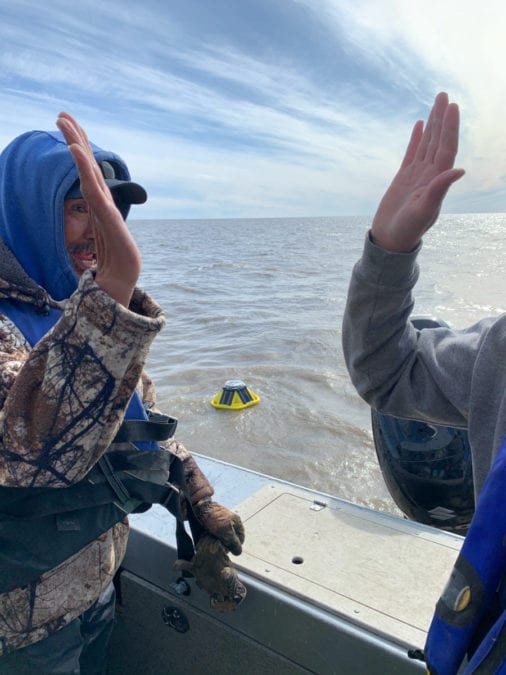
Photo courtesy Joint Secretariat
"This was the first year where we've had to rely on local's previous experience to do the work for us and it turned out to be quite successful," he said. "I think it has changed the way both parties see research going forward in the future. There will always be a need for base-level knowledge of science, but with the proper training and capacity building, we have proven you can have successful field programs using this remote method.
"We're already talking about next year and how we can expand and better utilize even more community members."
